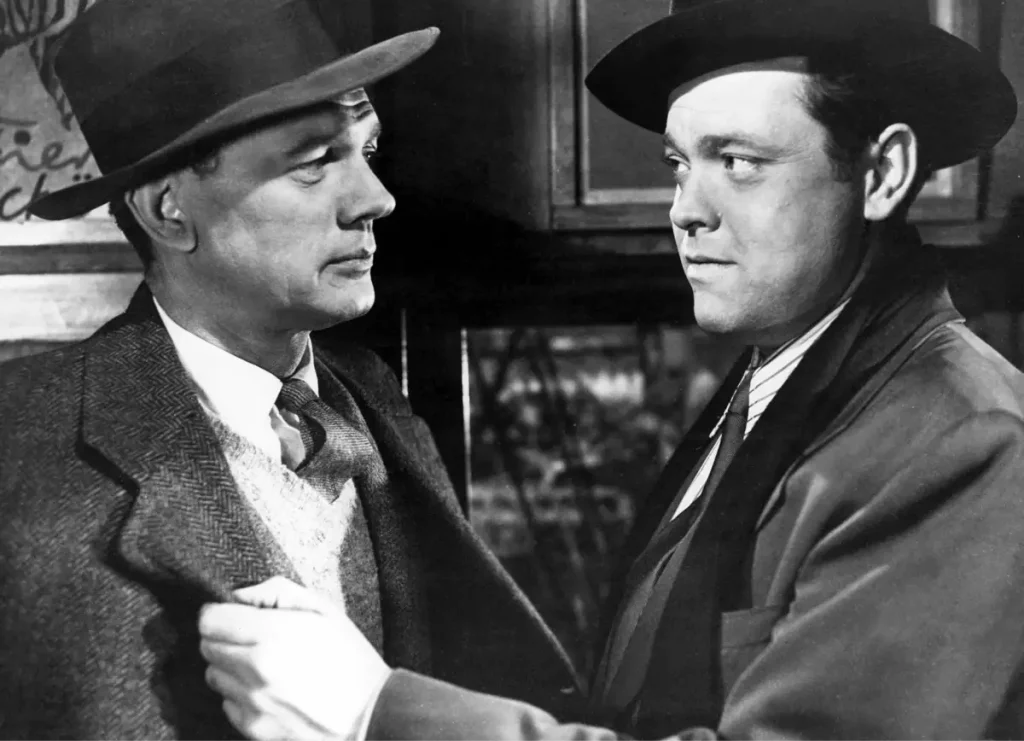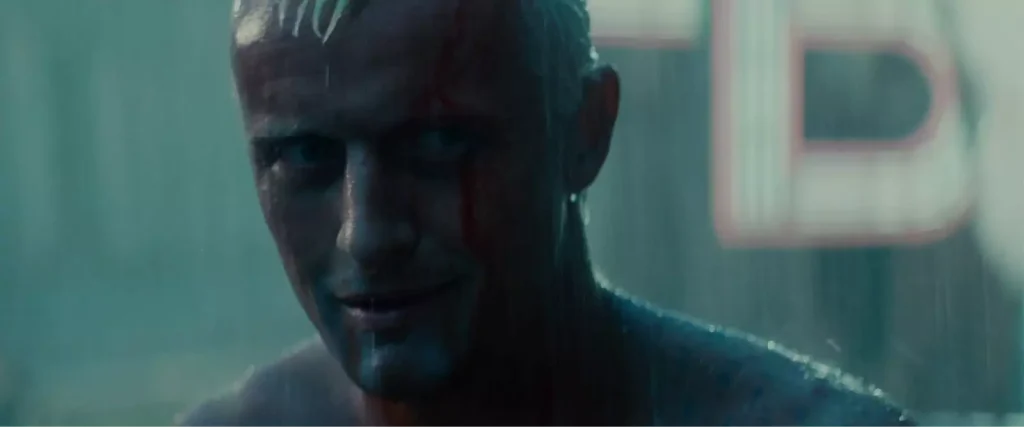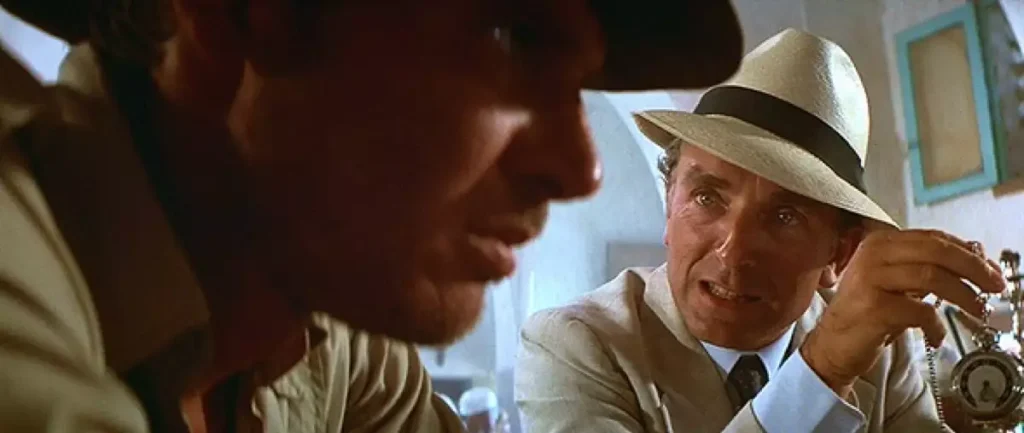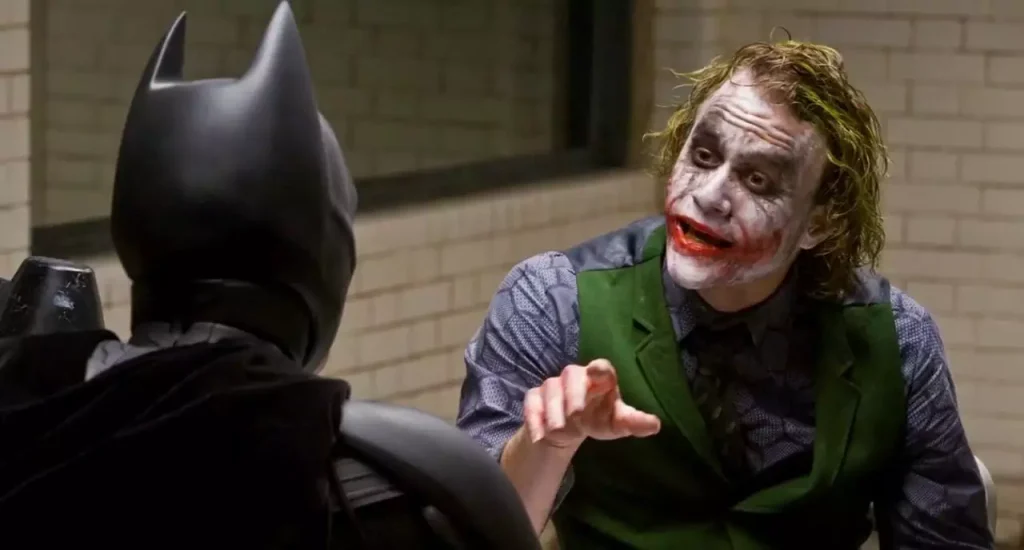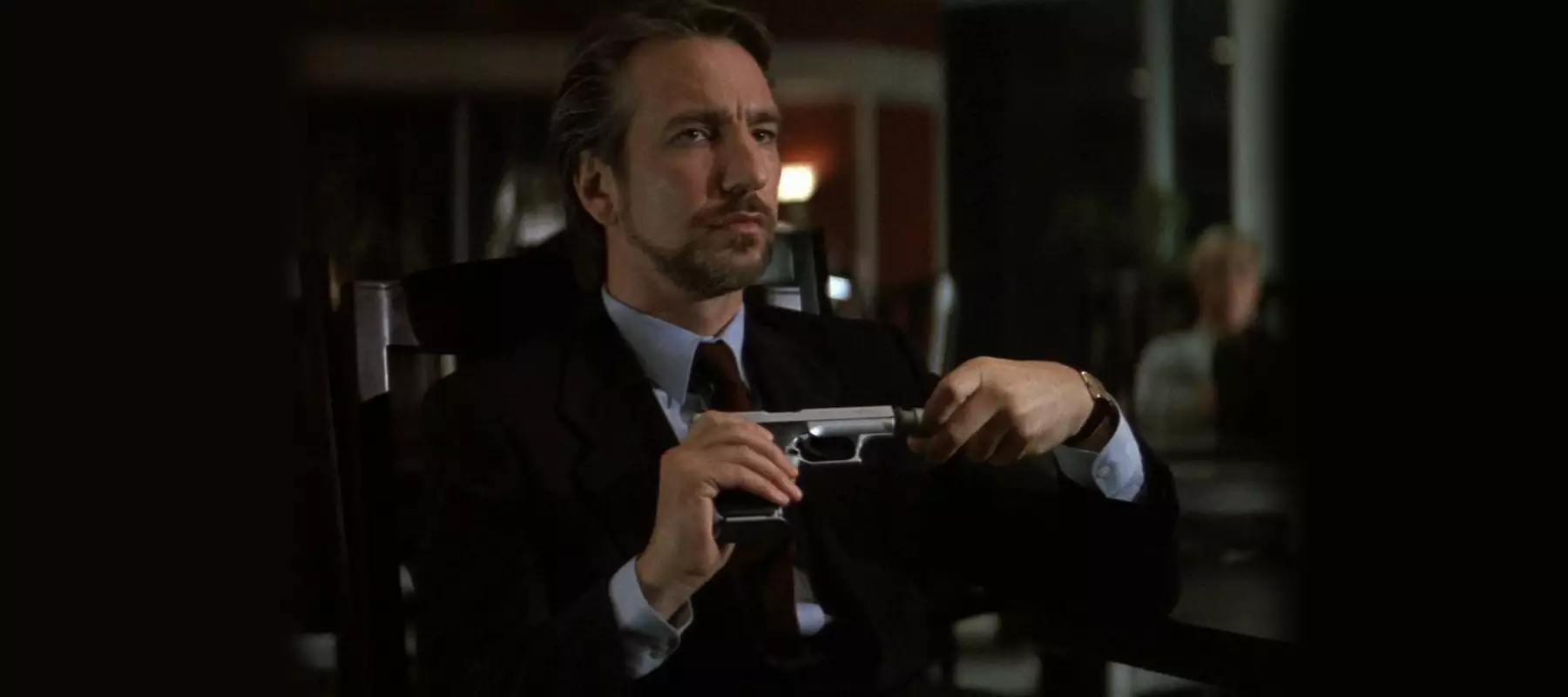
7 Tips for Creating
Unforgettable Villains
by John August
Many villains only exist to get in the way of the hero — they’re obstacles rather than fully-realized characters. When the story’s over, they dissolve in your mind.
Unforgettable villains are made of stronger stuff. They grab on and never let go. Here are seven traits you’ll find in some of fiction’s greatest villains.
1
Unforgettable villains think they’re the hero…
They’re the protagonists of their own stories, with hopes, joys and fears. Whether they seek revenge, power or security, their perspectives are justified.
2
…but they take things way too far.
Villains break laws, kill innocents, and use forbidden spells. Truly unforgettable villains cross lines we never even knew were there, boiling bunnies and destroying reputations.
3
They live at the edges of society.
Some unforgettable villains are literal outsiders — dangerous hermits living in the woods. Others are powerful insiders who place themselves above the law and outside societal norms.
4
They hold up a mirror to the reader.
Heroes represent who we would like to be. Unforgettable villains represent who we fear we actually are.
5
Villains let us know what they want.
Unforgettable villains tell us what they want. They tell us what they’re after, and it’s not simply to be an obstacle for the hero. Never be thwarting.
6
They make it personal.
Unforgettable villains are shaped by the heroes they face, and vice-versa. It’s not enough to win; the hero must suffer. And their little dog, too.
7
Flaws are features.
Unforgettable villains have something distinctive about how they look, sound or act that anchors them in our memories.
I asked screenwriter Chris Csont to look at some of our favorite movie villains with these ideas in mind.
Chris explores these ideas in A Writer’s Guide to Unforgettable Villains.
Scroll down for more
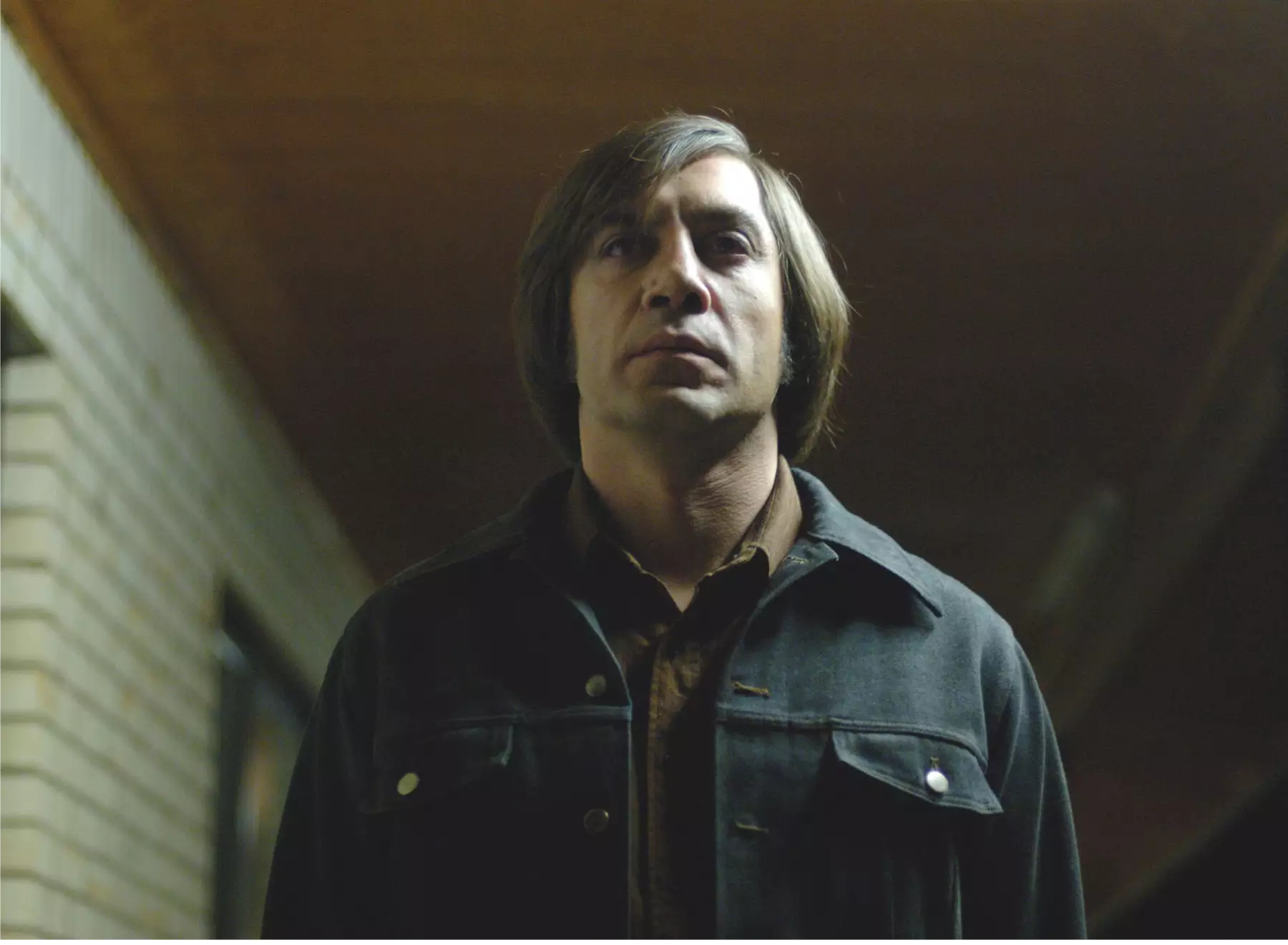
A Writer’s Guide to Unforgettable Villains
by Chris Csont
Most stories would be a lot shorter without their villains.
Batman would scare a few mobsters and still get six hours of sleep before the next Wayne Enterprises board meeting. Indiana Jones would have to escape some deadly traps, but he’d have more time for awkward eyeliner come ons from his students and shaking hands with museum curators. Luke Skywalker would finally have a chance to pick up those power converters.
And we, as readers, would have less to get excited about.
Villains not only make life difficult for our heroes, they create dramatic action everywhere they go. They carry the weight of the narrative along with the hero, helping to move the story forward with their own agenda.
So how can you make sure that the villain you’re crafting will keep the hero in peril and your audience glued to their seats?
How can you make your villains unforgettable? Start by looking at the story from your villain’s point of view.
Villains: They’re Just Like Us!
Villains are human, or at least have human characteristics.
They’re driven by desires and see the world from their individual perspective. Though their wants and needs may be extreme, there’s generally a shred of something relatable. The key is to make sure the audience understands where they’re coming from. Villains are the central character of their own story.
Bruce Willis’s Old Joe in Looper believes he’s the hero, a man who went back in time to prevent a future where his wife is murdered by men working for the mysterious Rainmaker.
Belloq in Raiders of the Lost Ark sees himself as a bold adventurer and expert archaeologist, able to discover treasures that no one else can secure.
Hans Gruber in Die Hard sees himself as an ingenious thief, like Danny Ocean or Thomas Crown.
Nurse Ratched doesn’t see herself as an obstacle to her patients’ freedom in One Flew Over The Cuckoo’s Nest, but as a caregiver attempting to do what’s best for the mental health of a group of troubled men.
Roy Batty in Blade Runner knows that he’s a replicant who was designed with a short life span, so he wants to find a way to live longer. It’s a basic human impulse (survival) that the audience can understand and feel sympathy for, even as his violent actions in pursuit of this goal establish him as the villain of the story.
Harry Lime in The Third Man is looking for a way to get rich quick in post-WWII Vienna. Greed is relatable, even if it’s usually not seen as admirable. He even makes his case for the way that selling tainted medicine to hospitals, resulting in the death of children, is no big crime. In a country that was just torn apart by war, he stands in a ferris wheel with the protagonist, his friend Holly Martins, looking down on the anonymous strangers below and asks a question to both Holly and the audience:
Lime is offering up an extreme version of a relatable quandary: how we justify personal gain at the expense of others.
From politicians to military commanders to terrorists, unforgettable villains make these kinds of grim calculations. By showing us their thought process — by letting them grapple with the issue out loud — they come alive for the reader.
1
Unforgettable villains think they’re the hero
The Ends Justify The Means
Good triumphs over evil. True love prevails. “The arc of the moral universe is long, but it bends toward justice.”
Repeated often enough, these ideas feel like they should be true, even when reality doesn’t quite match expectation. So when villains appear to be winning, they may naturally assume that they’re on the right side of history.
Basically:
Heroes win.
I am winning.
Therefore, I am the hero of this story.
Letting the villain get the upper hand helps your story in two ways: it sets the hero back, and helps reinforce the villain’s belief that their actions are justified.
In the Star Wars saga, Darth Vader is often near triumph. He defeats Obi-Wan Kenobi, killing the one man he believed still had any sway over the Force that could oppose him. He captures Han Solo and draws Luke into a trap. He fights Luke to what seems to be the point of submission. Moments like these, along with Vader’s strong connection to the Force, give him a sense of certainty that his actions are part of an inevitable march toward victory and power.
In Raiders, if Belloq truly believed he was the villain, would he be so eager to put on a headdress and perform the ritual to unleash the power of God? Control of the Ark convinces him that he will not face any consequences for partnering with the Nazis or attempting to kill Indiana Jones numerous times.
Old Joe overpowers an assassin and makes his escape. He has succeeded at not only making his way back to the past, but in bringing back information on who the Rainmaker might be. It’s not only his strong emotional desire to protect his wife, but his sense that he’s successfully working toward his goal that helps him to justify his actions in killing children, certain that one of them will grow up to be the Rainmaker.
Even Hans Gruber might change plans and abandon the robbery of Nakatomi Plaza if things were falling apart. But almost everything is going to plan. Law enforcement cuts off the power, helping to open the building’s safe. Gruber finds out Holly is McClane’s wife (and thus a useful hostage). These small victories help keep him pushing forward.
2
They take things way too far.
On the inside, they’re outsiders
From evil sorcerers to money-hungry explorers, unforgettable villains often exist on a periphery, far from the lives of ordinary people.
The Wicked Witch of the West lives far from the happy center of Oz. Harry Lime fakes his own death, forcing him to move through the city like a ghost to avoid detection. Darth Vader spends a good amount of screen time onboard a moon-sized battle station, separated from the everyday life of the worlds that station threatens.
Roy Batty is an outsider several times over. He’s a replicant, made to look human, and think like a human, but given a much shorter life span by his designers. Beyond the fact that he was built to work on the Off-world colonies, it’s this knowledge of his impending premature death that pushes him toward violent, rash action in search of a chance to have more life. Consider these qualities when you hear his last words toward the end of the film:
As an outsider, Batty has experienced a powerful, condensed emotional reality. He’s lived a lot in his short time — and now he wants more.
Nurse Ratched goes home every day to what we can assume is an average house. But her workplace gives her a particular perspective on the world, surrounded with mental patients, moving among them, sometimes separating herself from them by the glass windows. She is literally partitioned off.
3
They live at the edges of society.
Through A Glass Darkly
Heroes and villains define each other for the audience through their actions and interactions. We learn how different they are — and how much alike.
Belloq in Raiders is a great example of this mirroring. He and Indy are two men devoted to the pursuit of historic treasures. But while Indy learns to care for people (such as Marion) more than objects, Belloq never develops this insight. And that’s what costs him his life and eyeballs when the Ark is finally opened.
Sometimes the mirroring is more than metaphorical. In Looper, Old Joe is literally a future version of our hero. More than time travel, it’s a story about choices. We understand Old Joe’s decisions while rooting for Joe to succeed.
Darth Vader and Luke Skywalker also serve as mirrors for each other. Luke fears how similar they may be, played out on screen in The Empire Strikes Back when he has a vision of his own face under Vader’s mask. But their similarities highlight their differences: Vader gives in to anger and works to maintain power, while Luke learns to push aside anger and value compassion. Even up through Return of the Jedi, Luke must deal with the fear that he will fall to the Dark Side and become a villain like Vader.
Blade Runner gives us a broader sense of connection between the hero and the villain. Rick Deckard starts the film hiding from his past as a cop who hunted replicants. Batty has an oversized desire to squeeze every last drop of life he can out of his body, in constant pursuit of anyone who might be able to make the needed adjustments. Deckard is avoiding life, but when dragged back in to track down Batty and his crew, a change happens. On a basic level, he finds his desire for self preservation, fighting to stay alive when confronting target after target. On an emotional level, Deckard’s developing relationship with Rachael awakens another motivation for him to take action and change his path. Deckard’s choice to run off with Rachael at the end embodies Batty’s failed attempt to continue living.
As mirrors of each other, heroes and villains should be fighting in the same weight class. Indiana Jones is better matched against Belloq than Hitler. Old Joe couldn’t take on The Rainmaker, but his past self is a fair fight.
4
They hold up a mirror to the hero — and the reader.
Some People Want To Watch The World Burn
Jean Renoir said it most simply in The Rules of The Game:
The awful thing about life is this: Everyone has their reasons.
Villains have reasons, and that leads them to their plan of action. Your job is to let the audience understand what the villain is going after, and why.
Villains may state their goal directly to the protagonist. The Wicked Witch of the West? She comes right out and tells Dorothy “I’ll get you, my pretty, and your little dog, too!”
Toward the end of The Empire Strikes Back, Darth Vader tells Luke, “Join me, and we can rule the galaxy together as father and son.” This provides the audience with a retroactive understanding for his motives in the movie, as well as a picture of what motivates him in Return of the Jedi.
Some villains reveal their motivation to their allies rather than the hero. Nurse Ratched discusses the importance of her work with her colleagues. She sees herself as uniquely qualified to deal with the men in her ward, suggesting a combination of pride and a genuine desire to help are at play in her strict control over her patients.
Villains can also reveal their motivation to a victim, such as when Hans Gruber specifies to Mr. Takagi that he isn’t a terrorist, but is interested in the “six-hundred and forty million dollars in negotiable bearer bonds” kept in the Nakatomi Corporation’s safe. Mr. Takagi’s subsequent murder means that this information is of little use to him, but now the audience understands what’s at stake.
Sometimes it can be engaging to tease out the villain’s true goal. The Dark Knight’s Joker makes a game out of revealing his motivations. He plays at being an anarchic clown, telling Harvey Dent “Do I really look like a guy with a plan? You know what I am? I’m a dog chasing cars. I wouldn’t know what to do with one if I caught it! You know, I just… dothings.”
But his actions (and other moments of dialogue) paint a very different picture. He seems to have backup schemes to his backup schemes. Finally, he drops his attempts to be inscrutable and presents a clear motive for his madness:
The Joker’s goal for his crimes are similar to Batman’s goals for his vigilantism. Both are looking to reveal the corruption at the heart of Gotham, but the difference is that Batman thinks it’s isolated to the criminal element and that there are good people (like James Gordon, Rachel Dawes, and Harvey Dent) who can help him in his fight. The Joker believes that every person in Gotham is on the verge of becoming just another killer or criminal; there’s something rotten at the core of them all.
The choice of when to reveal a villain’s goal is often as important as how it’s expressed, because it changes our expectation about their future actions. When we learn that Gruber isn’t a fanatical terrorist, we ask, “How far will he go over some money?” When Darth Vader reveals his motive for isolating Luke from his friends, all the trouble he went to makes more sense. He wasn’t simply trying to ensnare one single member of the Rebel Alliance.
Villains themselves should have the opportunity to influence the audience’s perception. These candid moments help the audience to feel that they’re seeing the whole story. While the villain may ultimately be an irredeemable monster, giving them their “equal time” to explain themselves lets the audience understand the character’s motives and behavior.
5
Villains let us know what they want.
It Had to Be You
Unforgettable villains either have a personal connection to the hero from the outset, or develop a personal understanding throughout the story. They aren’t random ships passing in the night. Their interactions build familiarity, pain and consternation.
Some villains are out for revenge against the hero. The Wicked Witch of the West wants to track down and murder the girl who dropped a house on her sister. Max Cady in Cape Fear wants to torment the defense lawyer who suppressed evidence in his trial, leading him to spend over a decade in prison.
In Oldboy, the villain Lee Woo-jin has protagonist Oh Dae-su kidnapped and imprisoned for 15 years, only releasing him to play mind games and task him with unraveling a mystery: “Who would want revenge against me, and for what?” Lee Woo-jin blames Oh Dae-su for his sister’s suicide, and that intensely personal motivation drives him to concoct a truly depraved revenge.
Our understanding of Darth Vader’s personal connection with the hero grows over the course of their story. In Star Wars, Luke is told by Obi-Wan Kenobi that Vader killed his father. In a conflict later in the film, Luke watches Vader kill Obi-Wan, making Vader the man who he believes killed his father and his new father figure. In The Empire Strikes Back, Vader uses the capture of Han Solo and Leia Organa to draw Luke into a trap. As they fight, Vader reveals a difficult truth to Luke: He is Luke’s father. This revelation strengthens their personal connection, making the conflict between them both more difficult for Luke and more nuanced in the long run. It changes Luke’s goal for Return of the Jedi where he wrestles with the possibility that his father can be redeemed, and that the way to defeat the villain is not through anger and violence, but compassion. Luke attempts to leverage their growing personal connection, which becomes a weakness for Vader. Vader changes sides at the last minute, helping bring down the Empire, all because of their personal connection.
Even when there isn’t as direct a personal connection between hero and villain, a strong villain will learn the weak points to exploit in the hero. When Hans Gruber learns that one of his hostages is the McClane’s wife, he counts on McClane choosing his wife’s safety over stopping the heist.
There’s a clever inversion of this dynamic in Raiders of the Lost Ark. When Indy threatens to blow up the Ark unless Belloq and the Nazis release Marion, Belloq calls his bluff. He reminds Indy how he has spent his whole life searching for treasures like the Ark, knowing our hero is desperate to learn what’s inside. By exploiting Indy’s weakness for Marion, Belloq ups the stakes and the tension.
6
They make it personal.
The Devil In The Details
Unforgettable villains have distinctive traits. They look, talk and act in ways that feel specific and unique to their story.
Matt Groening explains:
The secret of designing cartoon characters — and I’m giving away this secret now to all of you out there — is: you make a character that you can tell who it is in silhouette. I learned this from watching Mickey Mouse as a kid. You can tell Mickey Mouse from a mile away…those two big ears. Same thing with Popeye, same thing with Batman.
When you think of Darth Vader, do you hear his labored breathing in your head? Do you imagine the way he reaches out and twists his fingers, using the Force to slowly crush the windpipe of one of his subordinates? Or maybe it’s the reveal of his face behind the mask at the end of Return of the Jedi, putting into context what’s been underneath all the armor and robotics that entire time?
Think about Anton Chigurh in No Country For Old Men. The unsettling haircut. The coin tosses. The use of a cattle gun as a weapon and tool.
Think about Heath Ledger’s Joker. Not just the clown makeup, but those scars. The scars that are useful for suggesting his backstory, but that are also unsettling in their own right.
These are all ways of displaying character psychology on the surface, and amplifying the relatable characteristics of their human form to create a distorted impression.
Take Immortan Joe in Mad Max: Fury Road. There’s a breathing apparatus, similar to Darth Vader, but one that shows how it’s a scavenged, cobbled together bellows. It tells the audience just how desperate he is to cling to life, as well as his precarious control over his post-apocalyptic fiefdom. His armor is a mix of car parts and molded plastic, making him look like one of the vehicles his war boys drive, further tying him to his rantings about driving the highways of Valhalla. And there’s the Texas belt buckle-sized chrome skull and steering wheel that sits over his codpiece, telling the viewer that this character is marrying some very violent ideas about driving, death, and masculinity. In a movie that moves so quickly — and with so little dialogue — these physical details of the villain not only make a distinct impression on the audience about his individual character, but shape the audience’s entire view of the story.
These features help set the villain apart not just from the hero, but from all other characters. They help anchor the villain in your memory and act as triggers for your fear and apprehension.
When you hear Vader’s breathing, you tense up. When you see Chigurh pull out a coin, you don’t just know what’s about to happen. You feel it.
A Little Push
In the end, it’s not only the costumes or their immoral actions that make villains so terrifying, but the understanding that they’re human.
The moustache-twirling, maniacal fiend feels different enough from us that we can distance ourselves. We can comfortably call them the villain and say they’re nothing like us. But a villain that tugs on our sense of empathy? That has characteristics that we understand, and can even relate to in some way? That terrifies us. To look inside the heart and mind of evil and see not just a reflection of the hero, but of ourselves.
Consider The Joker. In many depictions of the character, including in The Dark Knight, the character wants to make a point that anybody can be turned to violence and madness given the proper conditions. He calls madness as inevitable as gravity, and that all we need to find it in ourselves is receive “a little push.”
This is true terror that unforgettable villains create: with just one little push, any one of us could go down that path. We remember them because we see a piece of ourselves in them.
